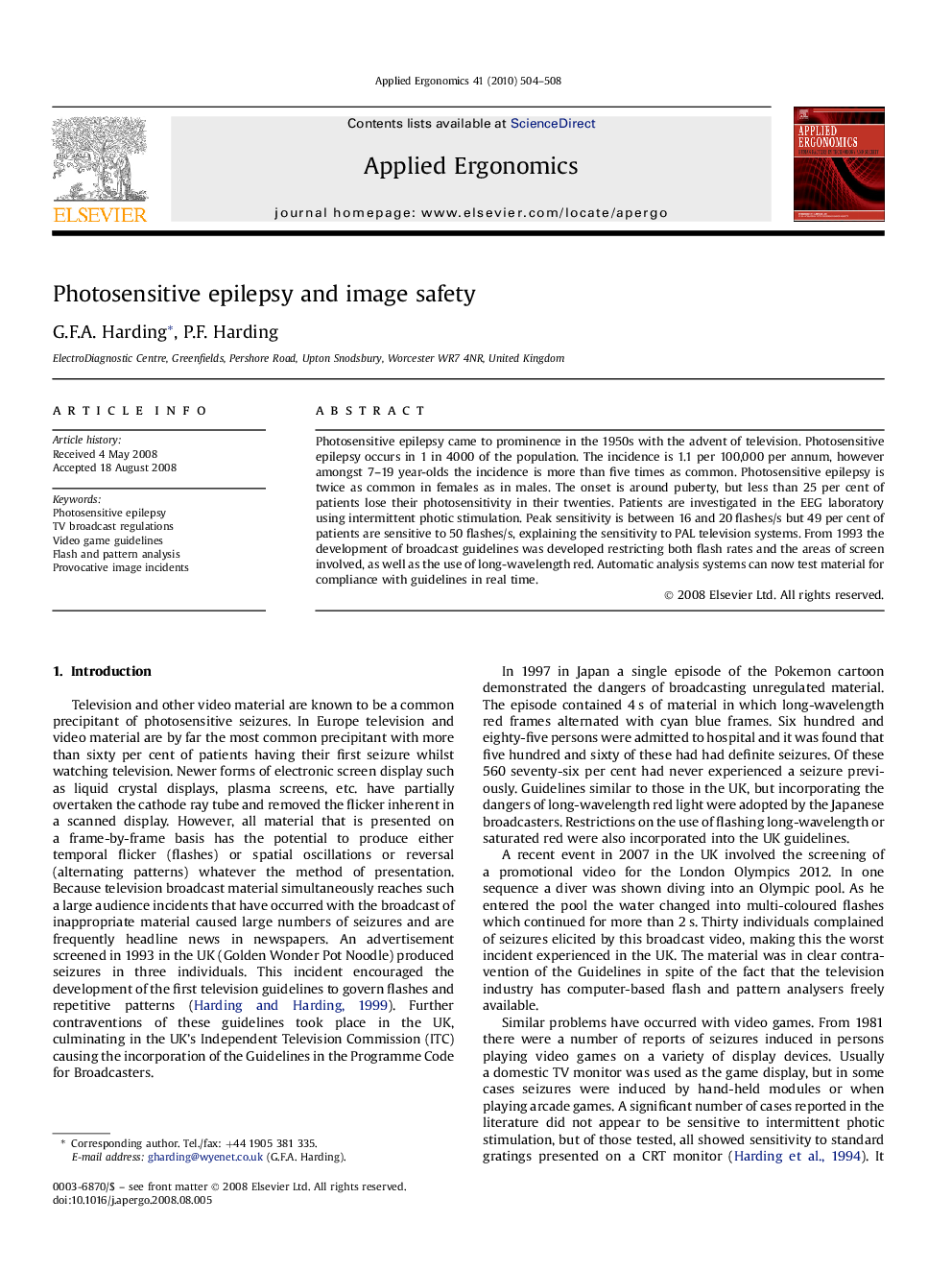| Article ID | Journal | Published Year | Pages | File Type |
|---|---|---|---|---|
| 548605 | Applied Ergonomics | 2010 | 5 Pages |
Photosensitive epilepsy came to prominence in the 1950s with the advent of television. Photosensitive epilepsy occurs in 1 in 4000 of the population. The incidence is 1.1 per 100,000 per annum, however amongst 7–19 year-olds the incidence is more than five times as common. Photosensitive epilepsy is twice as common in females as in males. The onset is around puberty, but less than 25 per cent of patients lose their photosensitivity in their twenties. Patients are investigated in the EEG laboratory using intermittent photic stimulation. Peak sensitivity is between 16 and 20 flashes/s but 49 per cent of patients are sensitive to 50 flashes/s, explaining the sensitivity to PAL television systems. From 1993 the development of broadcast guidelines was developed restricting both flash rates and the areas of screen involved, as well as the use of long-wavelength red. Automatic analysis systems can now test material for compliance with guidelines in real time.
